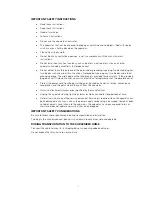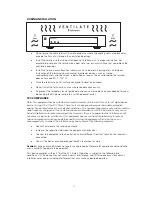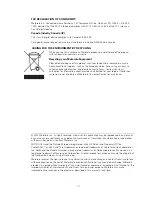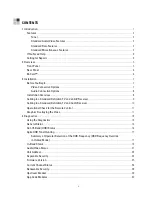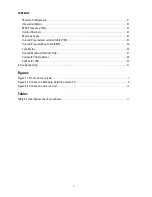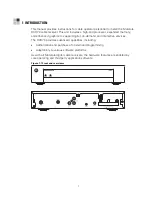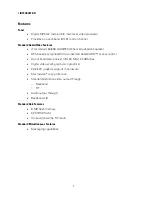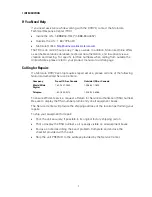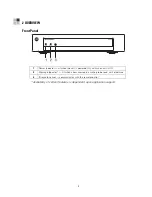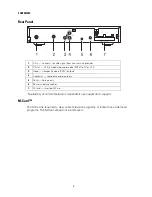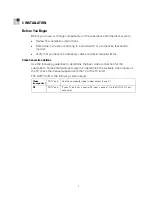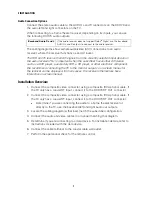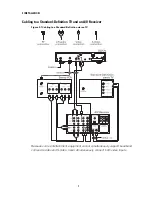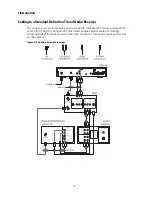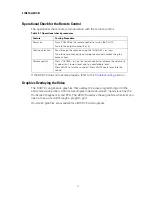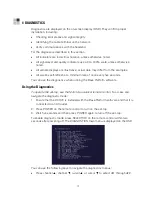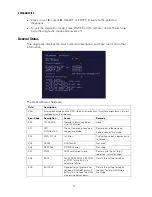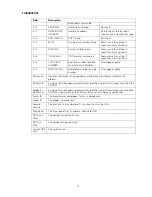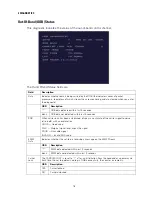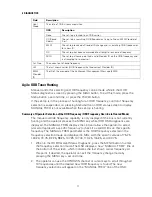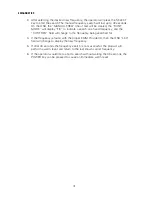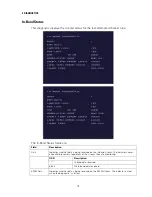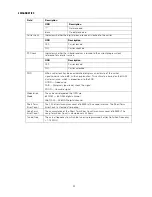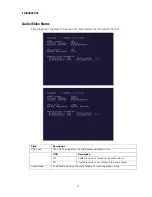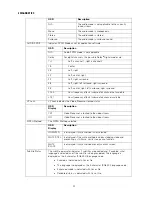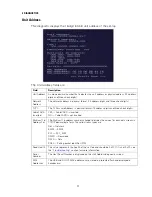
3 INSTALLATION
8
Audio Connection Options
Connect the stereo audio cable to the AUDIO L and R connectors on the DCH70 and
the audio left and right connectors on the TV.
When connecting to a home theater receiver, depending on its inputs, you can use
the following DCH70 audio outputs:
Baseband Audio R and L
If the audio receiver does not support Dolby
®
Digital, use the baseband
AUDIO L and R outputs to connect to the audio receiver.
The cabling diagrams show sample audio/video (A/V) connections to an audio
receiver, where the receiver functions as an A/V router.
The VCR and TV receive their A/V signals from the currently selected input device on
the audio receiver. This is important when the subscriber has another A/V device
such as a DVD player, a secondary VCR, a CD player, or other electronic component.
We recommend connecting the TV to the monitor output so on-screen menus for
the receiver can be displayed. (In many cases, the receivers themselves have
interactive on-screen menus).
Installation Overview
1.
Connect the composite video connector using a composite (RCA phono) cable. If
the TV only has a coaxial RF input, connect it to the DCH70 RF OUT connector.
2.
Connect the composite video connector using a composite (RCA phono) cable. If
the TV only has a coaxial RF input, connect it to the DCH70 RF OUT connector.
•
Determine if you are connecting the audio to a home theater receiver or
directly to the TV; use the baseband left and right audio out outputs.
3.
Locate the cabling diagram(s) that best match the subscriber configuration.
4.
Connect the audio and video cables in a manner matching that diagram.
5.
Determine if you are connecting to a data device. For installation details, refer to
instructions included with the data device.
6.
Connect the cable terminal to the coaxial cable wall outlet.
7.
Perform the operational check for the remote control.


